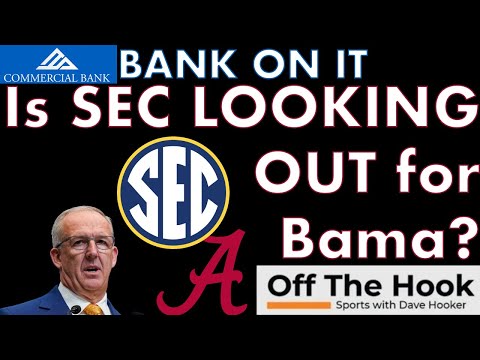A bombshell is about to affect the college sports world when the Clemson Tigers and Florida State Seminoles officially agree to a settlement with the ACC Tuesday. At the heart is not the renegotiated exit fee or revenue sharing, which will dominate the news, but the Grant of Rights agreement.
Currently, the biggest sticking point for the ACC’s biggest brands when it comes to trying to join another conference is the GoR. The ACC controls all media rights for any team in its league through 2036, whether or not that team leaves. That means if FSU left, the ACC could ban them on any media outlet through 2036.
Well, according to reports, this new settlement from multiple lawsuits filed by both schools, which includes either a $100 million or $200 million exit fee and a “brand initiative” to separate out 60 percent of the TV revenue for the top ratings generators, includes a fee to get out of the GoR. That means there’s a number now, when here wasn’t before.
Simply put, the path to leaving the ACC just got a lot easier for FSU and Clemson.
Think about it this way. Even if the exit fee jumps up to $200 million from the current $140 million, and even if paying to get out of the GoR agreement is costly, the schools can do it. Also, with that brand initiative, FSU and Clemson are about to rake in more money than usual, lessening their path.
Then the SEC could help pay those multiple fees to get those two schools, seeing it as an investment for financial value, especially if it allows them to renegotiate better deals with the networks. Most importantly, those exit fees are reportedly going to decrease significantly after 2030, making it even easier for FSU and Clemson to join the SEC then.
Don’t count on it.
As crazy as it sounds, the timing of these agreements may decrease FSU and Clemson’s value for the SEC over time. Think about it. A lot can happen between now and 2024 and 2030, and the recent agreements could actually make other schools more valuable.
Consider the brand initiative. Essentially, that deal means 40 percent of the TV revenue will be distributed with 60 percent distributed based on the ratings teams generated. Well, did you know FSU nor Clemson had the best ratings in the ACC this past year?
That went to the Georgia Tech Yellow Jackets.
What about program value? Although Clemson did make the College Football Playoff, so did the SMU Mustangs, and the Miami Hurricanes were more marketable for most of the season. FSU doesn’t even require a discussion after their abysmal season. Simply put, you could argue SMU, GT and Miami were the three most valuable ACC brands.
Moving forward, that gap could even grow. Many are suspicious about FSU’s future under Mike Norvell, and Clemson seems to be fading under Dabo Swinney. Could Miami, now with Carson Beck to replace Cam Ward, have a renaissance? It’s certainly possible. They almost did this year.
Beyond those other three schools we mentioned, though, then there are the North Carolina Tar Heels. UNC has Bill Belichick now. Forget the success he could have. What about the ratings he’ll draw? Does anybody not believe that at least for the foreseeable future, UNC will be more desirable TV than FSU or Clemson? They might get bigger games.
If that happens, and UNC is a success, they would bring way more value to the SEC by 2030 than FSU or Clemson does. After all, they could compete on all the tangible factors, and from an intangible perspective, they add a new market to the league while also upping its basketball value.
Meanwhile, should UNC go, that means the Duke Blue Devils have to go, as they’re contractually tied to the hip. It’s possible the SEC takes that deal over FSU or Clemson. Then you have the Virginia Tech Hokies, who are on the rise under Brent Pry. They have an SEC-style fan base at their peak. They are also a new market for the SEC.
Add in the fact that the Virginia Cavaliers and Louisville Cardinals also draw SEC-level revenue, and there are many options for the league beyond FSU and Clemson, both of whom play in markets where the SEC already is. By 2030, the SEC could be better off taking seven schools above FSU and Clemson.
What happens if that’s the case, and then FSU and Clemson are stuck in the devalued conference? That would be the classic definition of playing yourself, but there’s another path for them if this is the case. One of those paths is joining the Big 12, which is at least an entertaining league.
However, another more realistic path would seem to be the Big Ten getting involved in the fight for ACC teams. UNC, Duke, UVA, GT and Miami are all AAU schools, which is still a requirement for joining that league. Also, the B1G has a better TV deal than the SEC. As a result, they would have more to offer then the SEC to any of those schools.
With that in mind, the best chance for FSU and Clemson, assuming they fall off, would be for the B1G to attack SEC country and add some of those schools, leaving the SEC with some scraps. The second best chance for them would be to somehow add value to the SEC as a whole.
Taking all this into account, though, get ready for the insane amount of fun and speculation that will come with this settlement. FSU and Clemson have opened the door to destroy the ACC in five years, and that’ll radically alter college athletics once again. It just may not be what people think.










